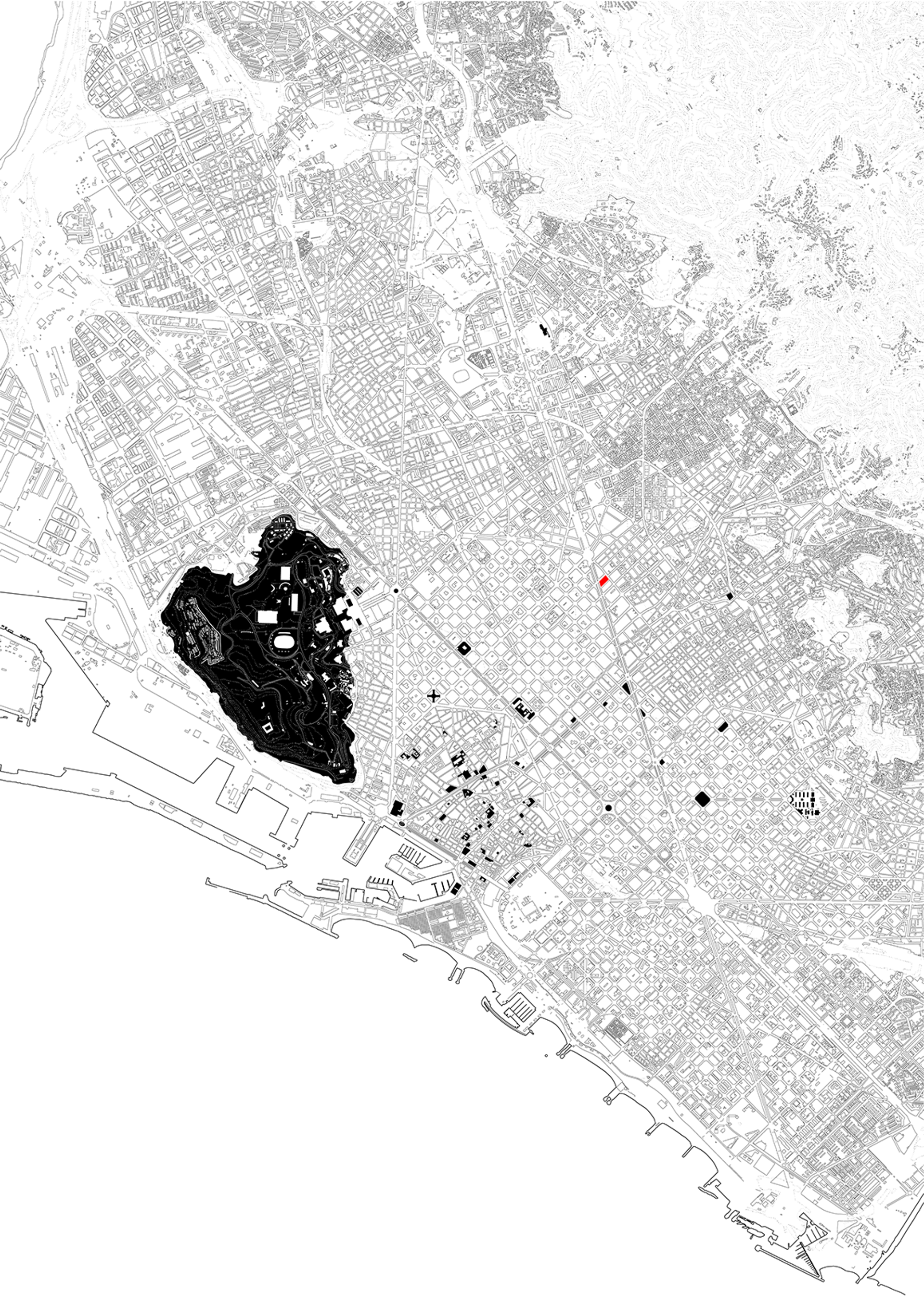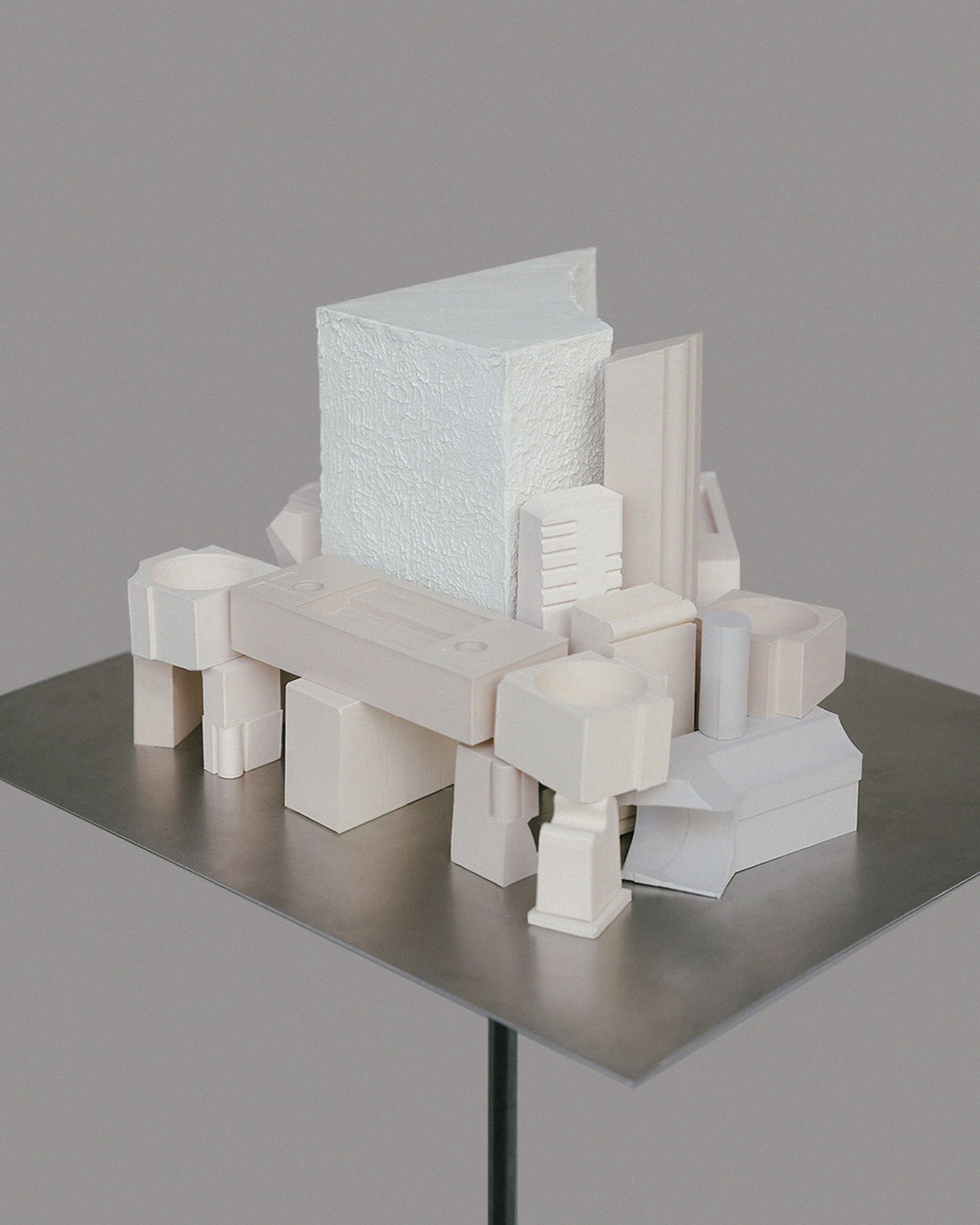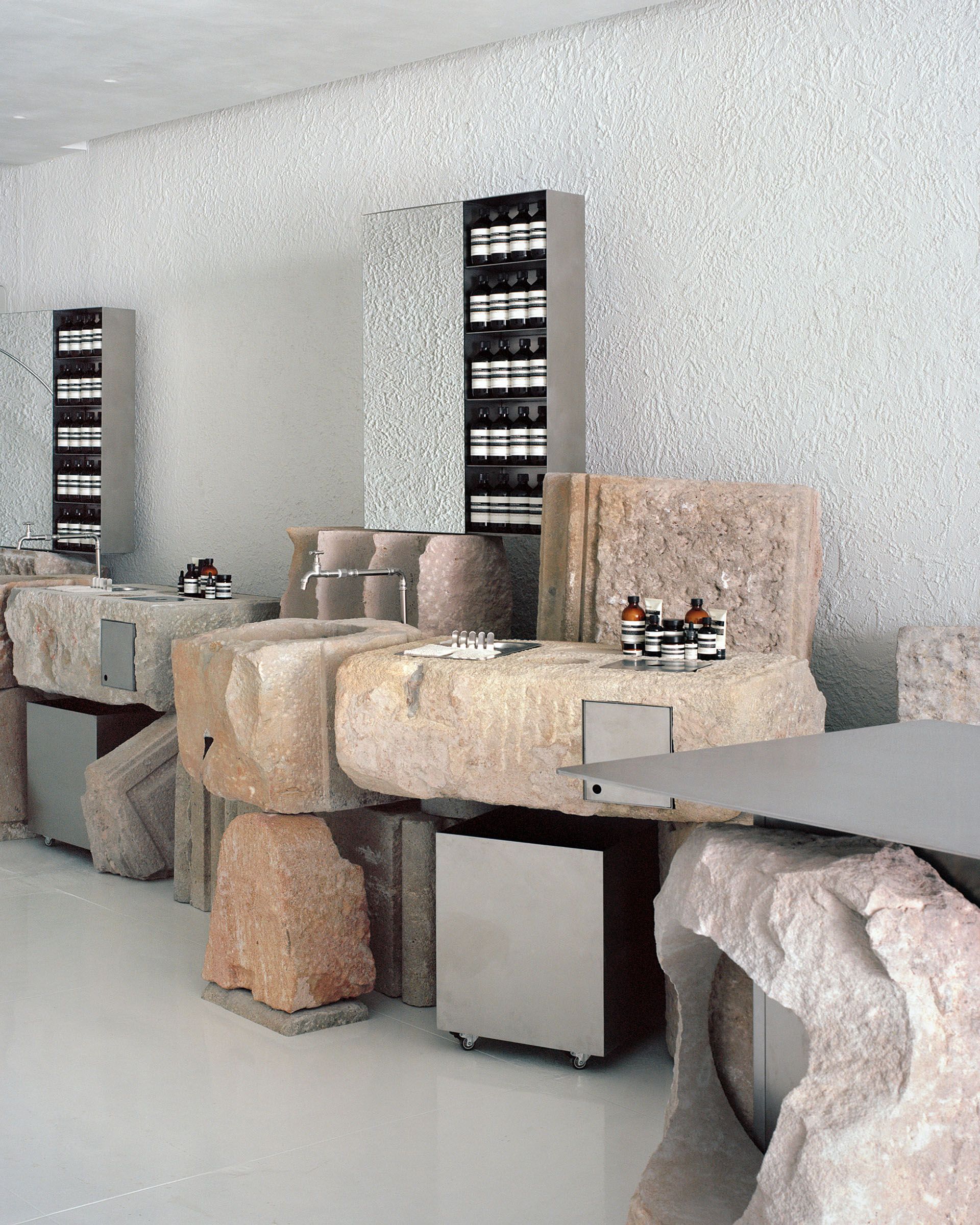Aesop Diagonal
Aesop's new store in Barcelona is rooted in identity and sustainability. In our search to connect the dots between these concepts, we found a figure that perfectly matched both: the anonymous artisans and unknown artists who preserve tradition and technique throughout generations. In a distinctly local approach, the project reuses KM0 stones from the Montjuïc quarry that have withstood the test of time, aiming to push back against the influence of globalization on the retail sector.




Working Through Meaning
In 2022, Aesop approached us to design their second store in Barcelona, initially intended for a modernist building on Rambla Catalunya. While researching its history and the Catalan modernism movement, these plans fell through as the space became unavailable, leaving our investigation at a standstill. After an eight-month hiatus, though, the final location was secured, and the brand's vision was clear: they wanted a space that went beyond beauty and resonated with the public through meaningful design.
Aesop's vision was for a space that was social, timeless, and local. We, however, added a fourth dimension: sustainability. To create a social atmosphere, we delved into the history of Barcelona's public fountains. For timelessness, we revisited our material research, concluding that stone was the most suitable option due to its unparalleled resistance and durability. Lastly, in a bold move, we committed to using only local stones for their quality and to make the project sustainable and purposeful for the long term.
To make this happen, much effort was put into finding valuable, reusable materials. After numerous attempts to repurpose stones from the Sagrada Familia, we discovered an old quarry where remnants of demolished buildings in Barcelona, constructed with Montjuïc stone, were stored. This exclusive stone, found only in the city, turned out to be a perfect fit for our purpose.




Montjuïc Stones: Memories of Barcelona
In line with our commitment to using local resources, we approached the Barbany family, renowned stonemasons with a 130-year legacy of working on the city's buildings and monuments. Many of these constructions (marked in black on the left illustration) were made of Montjuïc stone, quarried from the namesake mountain (marked in black as well) from the 6th century BC until the 20th century. This type of stone, known for its resistance and beautiful colouring, is no longer extracted due to its limited availability.
Surprisingly, the Barbany family had spent years gathering fragments from demolished nineteenth-century buildings in an abandoned quarry, driven by their deep love for this unique stone. Throughout the years, certain pieces had even served as experimental canvases for testing the quarry's new tools and technologies, resulting in unexpected shapes and perforations. Through pseudo-archaeological efforts, we uncovered pieces from Gothic quarter structures, ancient fountains, archways, and pedestals concealed beneath overgrown vegetation.
From where we were standing, one visit was enough to see that we had found what we were looking for. All the raw, local materials needed to build the most important part of the store, where the sinks are placed, the ritual related to hands and water happens, and clients experience Aesop's universe. The rest of the store would be neutral; the main character would be the stone ensamble and the product.



Creative Anastylosis: Inverting the Creative Process
The process of constructing Aesop's store departed from the norm, as the selection and arrangement of the 78 stones preceded the design itself. We catalogued each stone form and designed their assembly by hand. However, we soon realized that achieving precision could only be possible by moving each stone individually. This prompted the shift from traditional design methods to an on-site trial-and-error system and led us to build a model at the Barbany family workshop.
As we spent more time assembling the mock-up, we realised how complex the project was becoming—how would we place all these pieces in the middle of the Avinguda Diagonal in Barcelona, with a height of 2.70 meters, a tiny space in width and walls that limit the position of the tongs to lift the stones? For three weeks, we learned to pick up, lift, fix, and secure the stones and treat them like pieces of glass; once rough and tough, they were now unique and fragile. After numerous tests and iterations, the mock-up was validated, and the 78 carefully selected stones began to take on a new identity. Numbered and strategically palletised, each was meticulously placed in precise order for assembly, ready to embark on a new life.
The project aims to emphasise the beauty of the stone by creating a space that serves as a blank canvas. Textured stucco walls are juxtaposed with the sleek floor finish and the refined stucco ceiling. Stainless steel elements are carefully selected to add functionality to the space and enhance the appeal of the stones and the store. It is a game of contrasts between lightness and delicacy to density, thickness, and weight.
Ultimately, we found we needed a way to describe our process. Anastylosis is a Greek term for reconstructing ancient monuments by piecing their scattered parts together as precisely as possible. Since there's no specific term for the creative process of designing with previously used materials, we called it 'Creative Anastylosis.' This means we're flipping the traditional design process. Instead of starting with an idea and making it a reality, we begin with available materials and use our creativity to craft something entirely new.






Aesop Diagonal: Past, Present, Future
With Aesop Diagonal, we aimed to create a local and sustainable store that reflected the city's essence. We returned to one of the great concepts that guide our work: the Genius Loci, the protective spirit of a place, to design a space that would only be possible in Barcelona.
In a sort of life cycle, the pieces were seen as transitory elements with past lives, coming to land at Aesop's new store. From Montjuïc's quarry, extracted to give shape to the city's buildings, which were later demolished and returned to being just remnants until the project came along, repurposing its use and value. In a radical way, the project also accepts that if the store closes one day, the pieces will be returned to their original owner, the Barbany family, who generously provided them for Aesop's use.
The project is valuable because it demonstrates how forgotten pieces can be recycled and reused in the future. It highlights the value of existing resources and opposes the loss of character in the retail sector due to globalization, which has led to the widespread prevalence of identical spaces worldwide.

Avinguda Diagonal 594, Barcelona
Retail
Maxime Delvaux, Mesura
La Invisible (Lighting Design)









